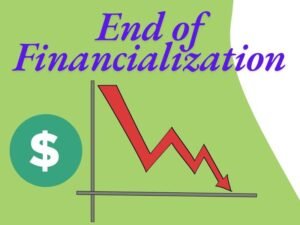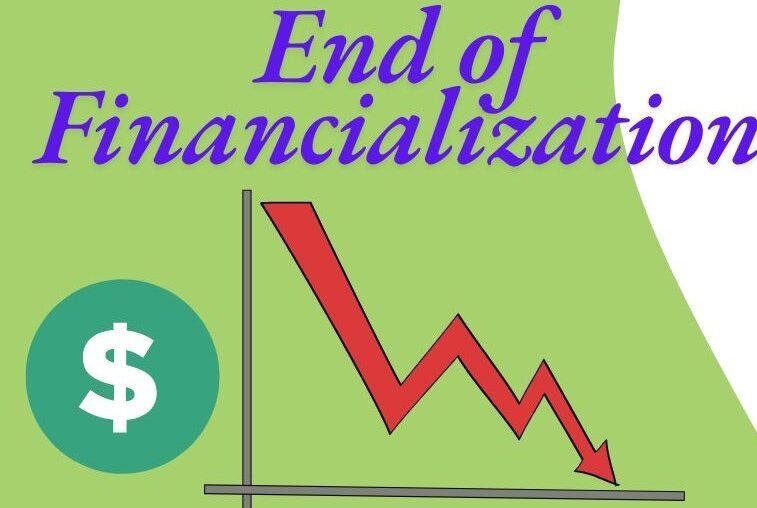End of Financialization: Understanding Economic Shifts and Their Impacts
In recent discussions, a significant shift in the economic landscape has been observed, primarily marked by the end of financialization. This blog aims to delve into the implications of this shift, particularly focusing on the recent layoffs at Amazon, the detachment of COMEX from LBMA, and the broader economic ramifications of these developments.
The Decline of Financialization
——————————-
The word “financialization” means the rising dominance of financial incentives, financial markets, financial institutions, and financial agents in the functioning of home and world economies. Yet as we are living in today’s economic era, it looks like this phase is ending. The question comes: what will it do to the common person and the economy overall?
Financialization has led to the economy being driven more by speculation than by production. This has created bubbles in various markets, distorting the actual value of goods and services. The recent Amazon layoffs, where 14,000 employees were laid off, are a harsh reminder of the cost of this financial model. As profits take precedence over jobs, the working people suffer the loss.
### Amazon Layoffs: A Case Study
Amazon’s layoff of 14,000 employees is a testament to the vulnerability of the existing economic framework. The layoffs are part of a larger trend in which businesses are reducing their employee base to stay profitable in the face of increasing costs and shifting market conditions. The technology sector, which had ridden the financialization model to success, is now questioning its strategy.
What does this mean for employees? Job security is dwindling, and many find themselves in precarious positions as companies adjust to the new economic reality. The implications extend beyond just job loss; they affect families, communities, and the overall economy.
COMEX and LBMA: Detachment and Its Consequences
———————————————–
Another major event is the decoupling of COMEX from LBMA. This decoupling indicates a change in the way gold and silver markets function. Traditionally, LBMA (London Bullion Market Association) has been the standard for gold prices, while COMEX (Commodity Exchange) has been a major player in futures trading.
This separation may result in a revision of how gold is priced around the world. With COMEX on its own, we can see changes in gold prices that better represent the supply and demand forces instead of the financialized price mechanisms previously used.
### The Implications for Gold Investors
For investors, this shift may translate to a more unstable gold market. As the dynamics between paper gold and physical gold are questioned, investors need to factor in the valuation differences. The shift highlights the value of keeping physical gold as opposed to using paper assets, which can be manipulated by market forces.
The Dollar’s Role in the Economic Landscape
——————————————-

Elon Musk’s recent remarks about the government’s capacity to print money “out of thin air” ring true in today’s economic environment. The dollar plays a central role in this economic environment, with its fluctuations affecting families and individuals directly. The phenomenon of “dollarization” has important implications for the way economies function.
While families grapple with increasing expenses, the depreciation of the dollar impacts their ability to buy. For example, news reports reveal that certain American children are experiencing severe financial strain, with their households being unable to meet basic needs. Such a scenario calls attention to the wider social problems emanating from financialization and the monetary policies of the government.
### Impact on Family Dynamics
The economic burden is not only an economic problem; it has social implications. The families are suffering from more stress, and as a result, divorce rates are on the rise and relationships are strained. Children, seeing their parents suffer, are emotionally and psychologically impacted. The social fabric is unraveling as economic tensions rise, and this is a direct result of the financialization period.
Predictions for the Future
————————–
Moving ahead, the economic projections are dire. The decline of financialization promises a new model of a more sustainable economy, one where production and genuine economic activity take precedence over speculation. It will not be an easy transition, as firms and individuals adjust to new realities.
In addition, the prospect of a housing market collapse hangs over us. With increasing interest rates and dipping consumer confidence, we can expect real estate prices to plummet. This would make matters even worse for families, especially those who have invested large sums in real estate.
### Adapting to Change
To survive these transformations, people and companies need to be proactive. It is essential to understand the dynamics of the new economic climate. Families need to rethink their financial plans, prioritizing savings and investments that yield stability instead of quick returns.
Conclusion
———-
The conclusion of financialization is a defining moment in our economic past. As we see the effects of this change unfold, it is critical to appreciate the larger implications for society and the economy. By appreciating these alterations, we can more successfully prepare for the future and strive toward a more stable economic model based on genuine value rather than speculative appreciation.
As we embark on this journey, being informed and flexible will be essential. Let us face the challenges ahead of us and cooperate towards a more sustainable economic future.

